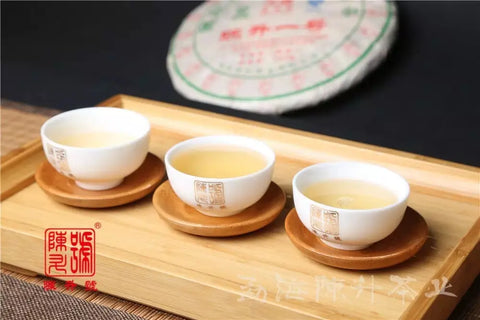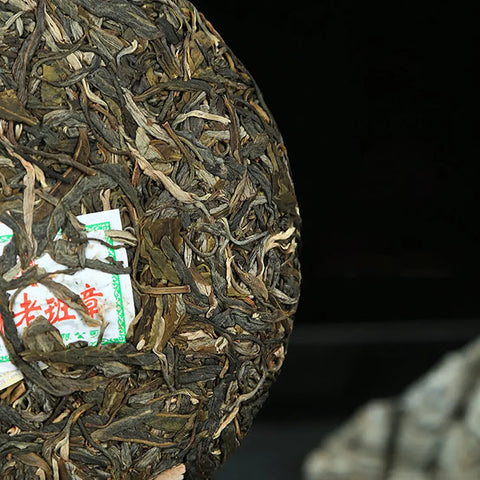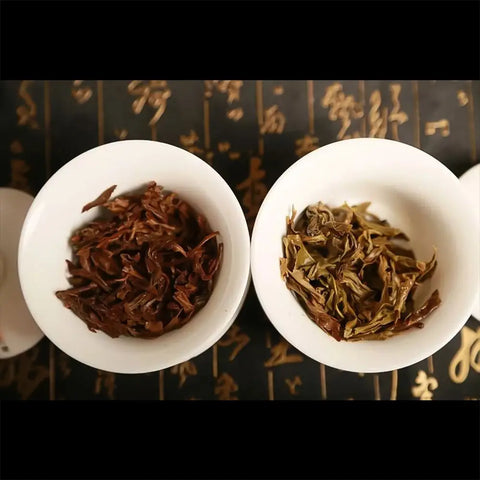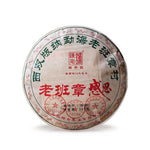How to Make Pu Erh Tea Taste Better
Pu-erh tea has a rich history and comes in various types, each with unique characteristics. It also offers several health benefits that contribute to its popularity.
History of Pu-erh Tea
Pu-erh tea originates from Yunnan Province in China. The tea's history dates back over a thousand years during the Tang Dynasty. Originally, it was traded along the ancient Tea Horse Road and valued for its preservation qualities and flavor development over time. The art of making Pu-erh tea involves specific fermentation and aging processes, which vary based on traditional methods and modern innovations.
Types of Pu-erh Tea
There are two main types of Pu-erh tea: Sheng (raw) and Shou (ripe). Sheng Pu-erh is naturally aged and can take years to develop its mature flavor profile. It often has a more complex and robust taste. Shou Pu-erh, on the other hand, undergoes a quicker, artificial fermentation process, resulting in a darker color and earthy flavor. Each type offers a different experience and potential health benefits.
Bestsellers
Health Benefits
Pu-erh tea is known for aiding digestion and weight loss. The fermentation process produces microbes and beneficial compounds that can improve gut health. It is also believed to help lower cholesterol and reduce blood sugar levels. Regular consumption may boost cardiovascular health and provide antioxidants that can fight free radicals in your body. While these benefits can improve overall well-being, scientific support varies in terms of the extent.
Selecting Quality Pu-erh Tea

Finding the best Pu-erh tea begins with identifying top-tier leaves and understanding whether to choose raw or ripe varieties. This section covers crucial aspects to help you make an informed decision.
Identifying Quality Leaves
High-quality Pu-erh tea leaves exhibit certain visual and aromatic characteristics. Look for leaves that are whole, intact, and free from excessive stems or dust. Their color should be a rich, dark green or golden brown, indicative of proper aging and processing.
Inspect for a consistent size and shape among the leaves. An even distribution in leaf size ensures uniform brewing. Additionally, a pleasant earthy fragrance signals good quality. If you notice a musty or off-putting scent, the tea might be inferior or improperly stored.
Purchasing from reputed sellers ensures authenticity. Established tea vendors maintain strict quality control, providing more assurance regarding the tea’s origins and handling.
Choosing Between Raw and Ripe Pu-erh
Deciding between raw and ripe Pu-erh depends on your preference and desired flavor profile. Raw Pu-erh, also known as "Sheng," is less processed, resulting in a more astringent, lively taste. With age, it develops complex, mellow flavors, making it a favorite for long-term storage.
On the other hand, ripe Pu-erh, or "Shou," undergoes an accelerated fermentation process. This gives it a smooth, earthy flavor with rich undertones, ready for immediate consumption.
Consider the aging potential of raw Pu-erh if you enjoy evolving flavors. Opt for ripe Pu-erh if you prefer a mature taste without the need to wait. Both types offer unique experiences, so trying samples may help in making your choice.
Proper Storage for Enhancing Flavor

Proper storage is crucial to maintain and enhance the flavor of Pu-erh tea. Key factors include controlling humidity and temperature as well as the techniques for aging the tea.
Storage Conditions
Store Pu-erh tea in a well-ventilated area with consistent temperatures. Ideal temperature should be between 68 to 77°F (20 to 25°C). Avoid exposure to direct sunlight, as it can degrade the tea's quality.
Lao Ban Zhang
Humidity levels need to be maintained between 60% to 70%. Too much moisture can cause mold, while too little can dry out the leaves, losing their flavor.
Airflow is also important. Use breathable materials like cloth or paper to wrap the tea, allowing it to breathe while protecting it from dust and strong odors.
Aging Potential and Techniques
Aging Pu-erh tea enhances its flavor complexity. Raw Pu-erh benefits greatly from aging, developing deeper flavors over time. Store it for at least 10 years for optimal taste, although some teas can age for decades.
Ripe Pu-erh can also be aged, but usually requires a shorter period, around 5 to 10 years. To age the tea properly, rotate the tea cakes periodically to ensure even exposure to air.
Utilize clay pots or wooden shelves for optimal aging conditions. These materials provide the right balance of moisture retention and breathability, crucial for a good aging process.
Preparation Essentials
Properly preparing Pu-erh tea involves attention to water quality, precise temperatures, and suitable teaware. These factors are critical for enhancing the flavor and ensuring an enjoyable experience.
Choosing the Right Water
Water quality plays a significant role in tea preparation. Since Pu-erh tea is sensitive to impurities, use filtered or spring water. Avoid tap water containing chlorine or heavy minerals, which can negatively affect the taste. The pH level of the water should be slightly acidic to neutral, ideally around 7. High-quality water will draw out the tea's unique flavors, ensuring a pleasant and balanced cup.
Optimal Brewing Temperatures
The temperature of the water dramatically impacts the taste. Ideal brewing temperatures for Pu-erh tea range between 195°F to 212°F (90°C to 100°C), depending on the tea's age and type. You can use a thermometer to achieve precise temperatures or allow the water to cool slightly after boiling. Older, aged Pu-erh teas can withstand higher temperatures, while younger teas might require slightly cooler water.
Selecting Suitable Teaware
The right teaware enhances the brewing process and the tea's flavor profile. Traditional Yixing clay teapots are highly recommended for Pu-erh tea due to their porous nature, which absorbs the flavors and helps develop richer brews over time. Alternatives like gaiwans or glass teapots are also suitable, offering better control and visibility during brewing. Ensure that the teaware is clean and pre-warmed before use for the best results.
Brewing Techniques

To enhance the taste of Pu Erh tea, two main brewing techniques are used: Traditional Gongfu Brewing and the Western Brewing Method. These methods vary in terms of brewing time, water temperature, and equipment used.
Traditional Gongfu Brewing
This method uses a Gaiwan or a small Yixing teapot. Start by rinsing your tea leaves with hot water to awaken them.
Use a higher tea-to-water ratio, typically around 5-7 grams of tea per 100ml of water. Water temperature should be around 95°C (203°F).
Brewing times are short, starting with 10-15 seconds for the first infusion and increasing by 5-10 seconds for subsequent infusions.
Gongfu brewing allows for multiple infusions, revealing different layers of flavor with each brew. This method is ideal for getting the most nuanced taste from high-quality Pu Erh tea.
Western Brewing Method
This approach is more straightforward and uses equipment commonly found in most kitchens. You will need a teapot and a strainer.
Use approximately 2-3 grams of tea per 240ml of water. Water should be heated to around 90-95°C (194-203°F).
Steeping time ranges from 2-5 minutes, depending on how strong you want your tea.
This method is less time-intensive and requires fewer infusions. It's suited for daily drinking and works well with both raw and ripe Pu Erh varieties.
Post-Brewing Tips
To enhance the taste of pu erh tea after brewing, consider the way you serve it and how you balance its brew strength. These aspects can significantly impact your enjoyment of this unique tea.
Serving Suggestions
Serve pu erh tea in small, pre-warmed cups to retain heat, which can bring out its aromatic qualities. Pair with light snacks, such as nuts or dried fruit, to complement its earthy flavor.
Use a teapot or gaiwan made from materials like clay, which can enhance the depth of the tea’s taste. Ensure that your serving vessels are clean and free of residual flavors from other teas.
Consider serving pu erh tea with a slice of lemon or a sprig of mint to add a refreshing twist. This can balance the tea's natural earthiness, making it more accessible to those new to its distinct flavor profile.
Adjusting Brew Strength
If the tea tastes too strong, try shortening the steeping time or using fewer leaves. Experiment with shorter infusion periods, starting with a 10-15 second rinse before your main infusion.
For a lighter taste, increase the water-to-leaf ratio. Add more water for a milder flavor or brew the tea in larger pots. For stronger tea, let it steep longer or add extra leaves, monitoring the flavor incrementally.
Adjusting the water temperature can also affect strength. Lower temperatures (around 90°C/194°F) for a milder brew, higher temperatures (near boiling) for a stronger extraction.
Flavor Enhancement Methods

Making pu erh tea taste better can be achieved through blending it with other teas and incorporating various additives. These methods enhance the flavors and tailor the tea to your personal preferences.
Blending with Other Teas
Blending pu erh tea with different types of teas can create unique flavor profiles. Green tea adds a fresh, grassy note, while black tea lends a robust, malty flavor. Oolong tea offers a balance with its floral and fruity undertones.
Create your blend by mixing small amounts of pu erh with your chosen tea. For instance, a 3:1 ratio of pu erh to green tea can add subtle freshness without overpowering the pu erh’s earthy notes. Experiment with proportions to find the perfect balance for your taste.
Keep your blended teas in an airtight container to preserve their flavors. Blending can offer a refreshing change and introduce new aromatic experiences.
Incorporating Additives
Adding various ingredients can transform the taste of pu erh tea. Citrus elements like lemon or orange peel provide a bright contrast. Spices such as cinnamon or ginger add warmth and complexity. Sweeteners like honey or rock sugar can soften the tea's intensity.
To incorporate these additives, steep your pu erh tea as usual. Add a slice of citrus peel during steeping for a zesty touch. For spices, you can either add them directly to the tea leaves or brew them separately in a small amount of water before combining.
Taste the tea as you go to avoid overpowering the natural flavors. The right combination can elevate the drinking experience, making pu erh an even more delightful brew.
Tasting and Evaluation
Mastering the art of tasting Pu-erh tea enhances your appreciation and helps you identify the best flavors and qualities. Developing a keen tasting palate and recording your observations are vital to becoming proficient.
Developing a Tasting Palate
Start by sipping Pu-erh tea slowly, focusing on different flavor notes like earthiness, sweetness, and bitterness. Use a neutral environment, free from strong smells, to avoid affecting your senses. It's important to pay close attention to the tea's mouthfeel and aroma.
Experiment with varying steeping times to discover how it influences taste. Using a tasting wheel can assist in identifying specific flavors and aromas. Practice regularly to train your palate to distinguish between the subtle nuances.
Recording Tasting Notes
Documenting your tasting experiences helps track your preferences and improvements. Use a tasting journal to note the date, type of Pu-erh tea, steeping time, and water temperature. Describe the tea's appearance, aroma, flavor, and aftertaste in detail.
Consider using a rating system for different attributes like color, aroma, taste, and overall satisfaction. Capture any changes in flavors with repeated steepings. Consistently recording your observations will refine your skills and deepen your Pu-erh tea appreciation.
← Older post Newer post →











